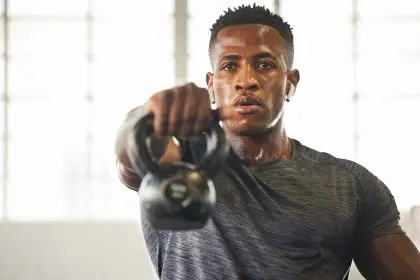The world of fitness has crowned a new champion in core training, and it’s not the traditional sit-up. The plank, a deceptively simple exercise, has captured the attention of fitness enthusiasts worldwide, with one dedicated athlete even holding the position for an incredible nine hours, 30 minutes, and one second.
From beginner to pro: Your complete guide to plank mastery
Before diving into the variations, understanding proper form is crucial. The foundation of every successful plank lies in maintaining a straight line from head to heels, engaging your core, and breathing steadily throughout the hold. Here are the 11 most effective plank variations, arranged from beginner-friendly to advanced challenges:
- The forearm plank stands as the cornerstone of all variations. Position your elbows directly under your shoulders, maintain a straight back, and focus on pulling your navel toward your spine. Start with 20-second holds and gradually increase your time as you build strength.
- The reaching plank introduces dynamic movement to the static hold. From your forearm position, extend one arm forward while maintaining stability through your core. The key to mastery lies in preventing hip rotation as you alternate arms.
- The bird-dog plank combines balance with strength. As you extend opposite arm and leg, imagine a glass of water balanced on your lower back – this visualization helps maintain proper form and prevents unwanted movement.
- The plank walk-down builds shoulder stability while challenging your core. Think of your body as a solid wooden board as you transition between high and low positions. The goal is smooth movement without hip sway.
- The plank kettlebell drag intensifies core engagement through lateral movement. Start with a light weight and focus on maintaining your plank position as you smoothly slide the kettlebell across your mat. Your hips should remain perfectly still throughout the movement.
- The body saw plank creates instability through controlled movement. Using sliders or towels under your feet, the subtle forward and backward motion challenges your core stability in new ways. Keep your movements small and controlled at first.
- The modified side plank serves as an entry point to lateral core training. By keeping your knees bent, you can focus on proper form and hip alignment before progressing to more challenging variations. Think about creating a straight line from your head to your knees.
- The full side plank builds lateral core strength and shoulder stability. Imagine your body pressed between two panes of glass as you hold the position, ensuring perfect alignment from head to feet.
- The side plank leg raise adds dynamic movement to lateral stability. As you lift your top leg, maintain steady breathing and focus on keeping your hips elevated throughout the movement. Picture pushing the floor away with your supporting arm.
- The side plank hip drop targets your obliques through controlled movement. The key lies in maintaining shoulder stability while lowering and lifting your hips with precision. Think about moving in slow motion to maximize muscle engagement.
- The rotating plank challenges your core through multiple planes of movement. As you transition between positions, focus on maintaining tension through your midsection. Imagine your core as the axis around which your body rotates.
Making the most of your plank practice
Success with these variations comes from consistent practice and proper progression. Start with three sets of the basic forearm plank, holding for as long as you can maintain perfect form. Once you can hold for 60 seconds with good form, progress to the next variation.
Beyond the basics: Creating your perfect plank routine
For optimal results, incorporate three to four plank variations into each workout. Start with the basic forearm plank as a warm-up, then progress through more challenging variations. Remember to rest between sets and focus on quality over quantity.
Each variation builds upon the last, creating a comprehensive core training program that targets every aspect of your midsection. By mastering these movements, you’ll develop not just a stronger core, but better posture, reduced back pain, and improved athletic performance across all your activities.
The beauty of plank variations lies in their scalability and accessibility. Whether you’re working out at home or in the gym, these movements require minimal equipment and can be modified to match your current fitness level. Start where you are, progress at your own pace, and watch as your core strength transforms over time.
















